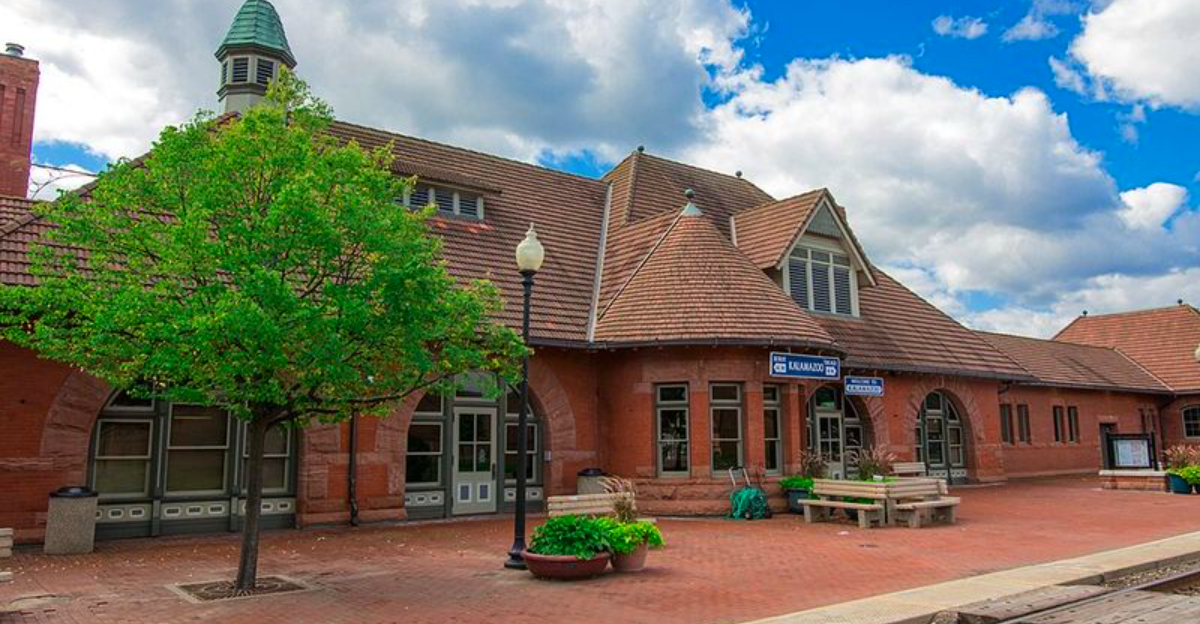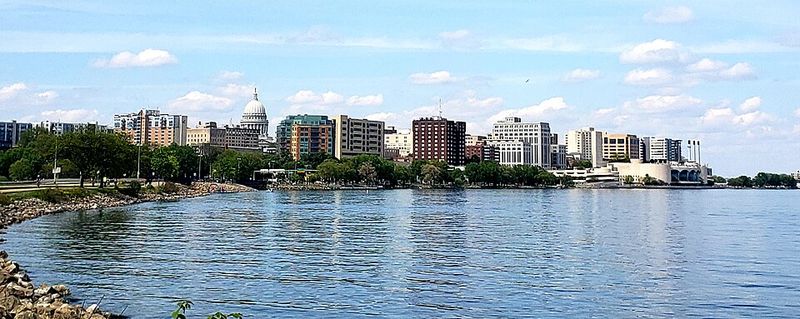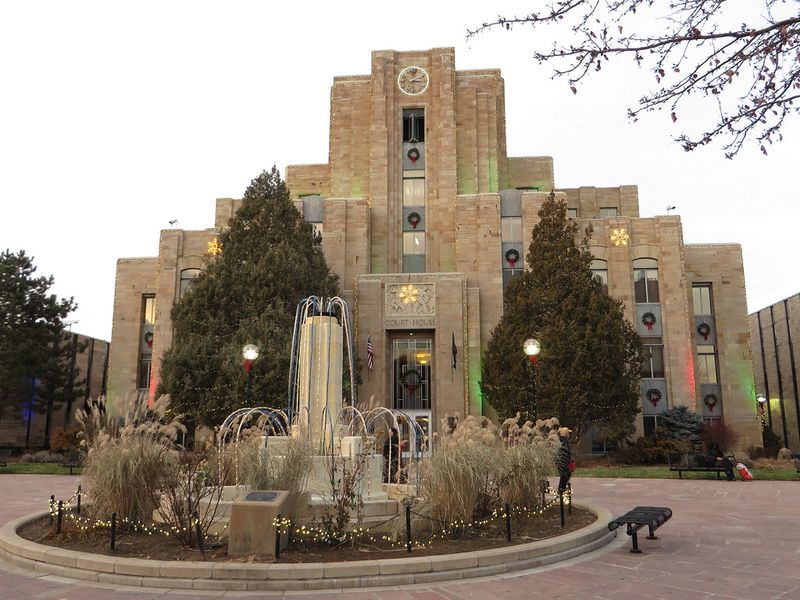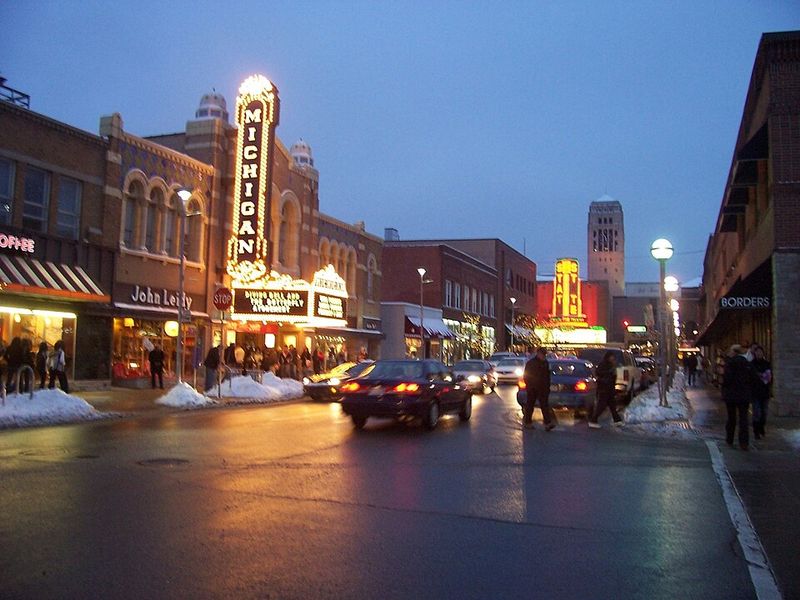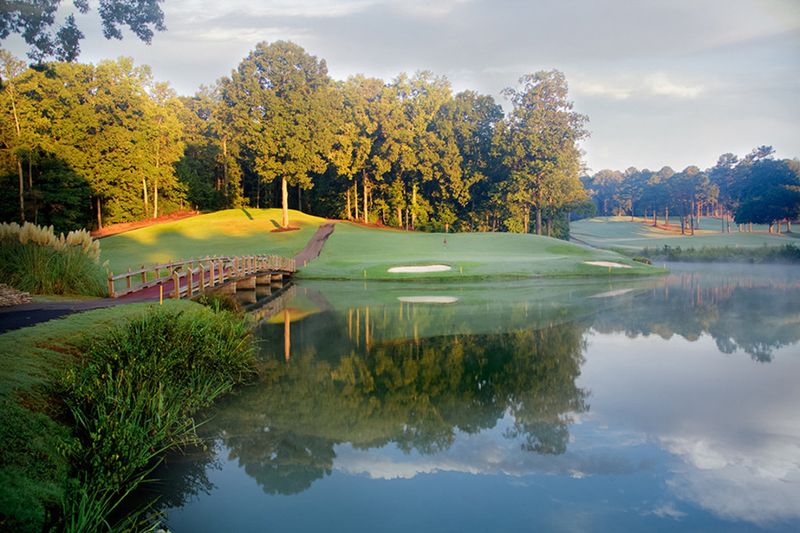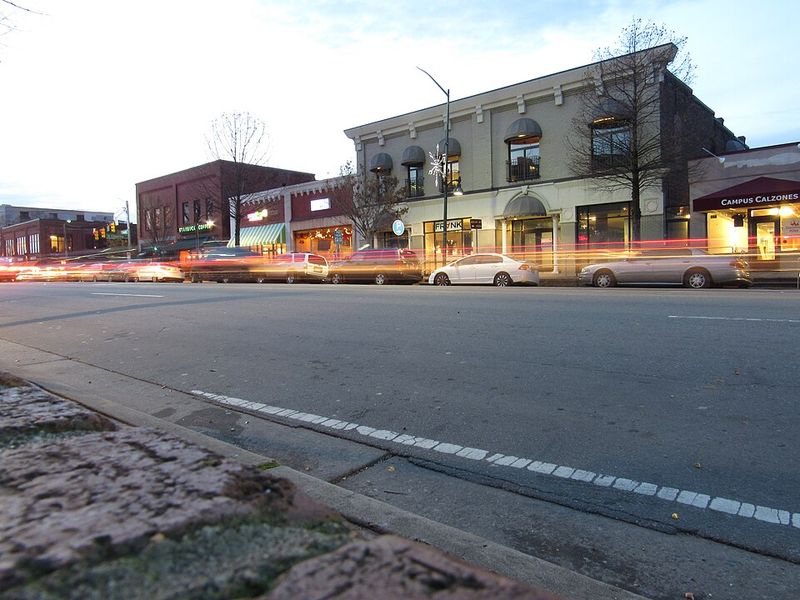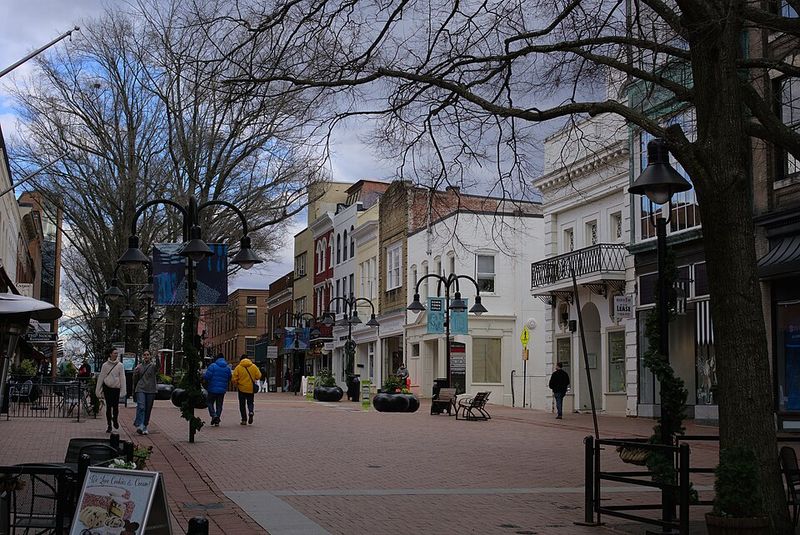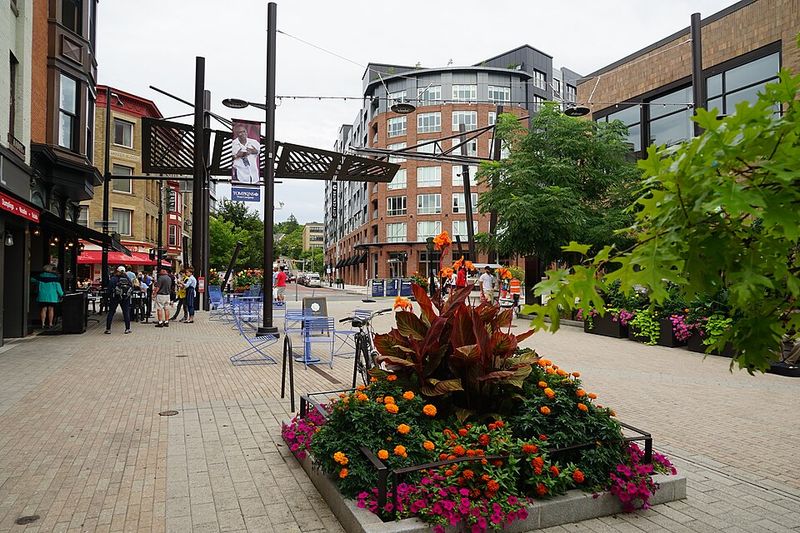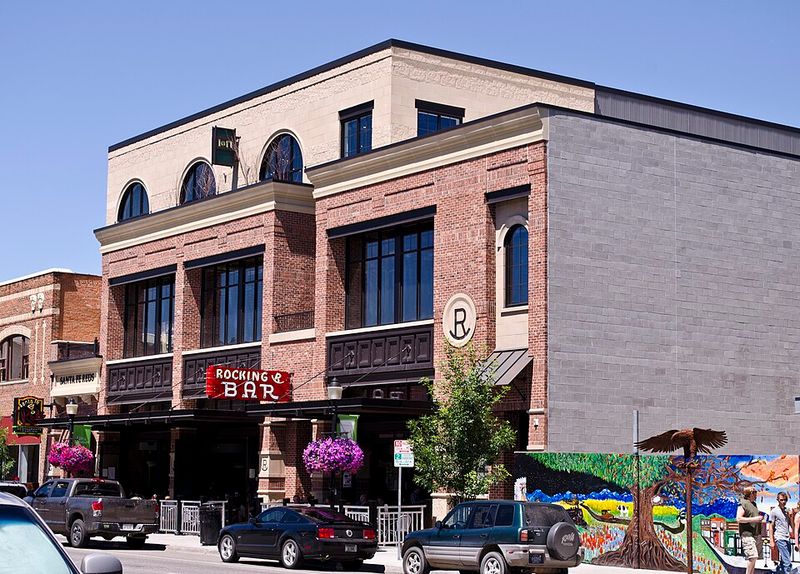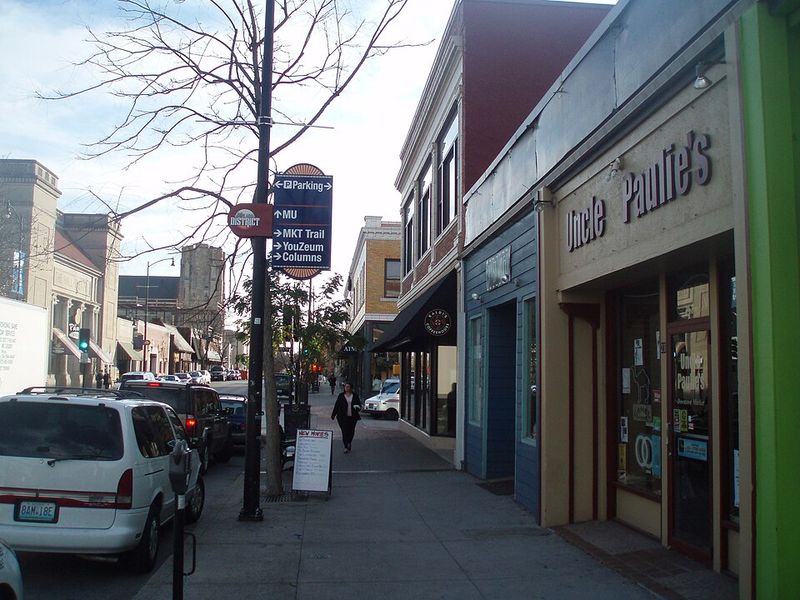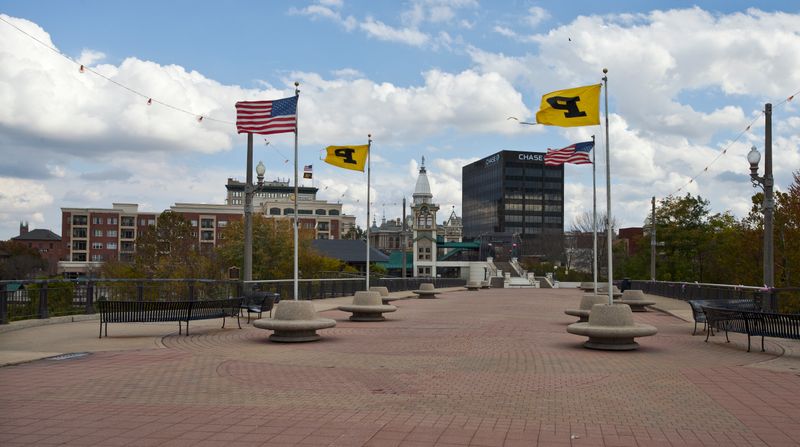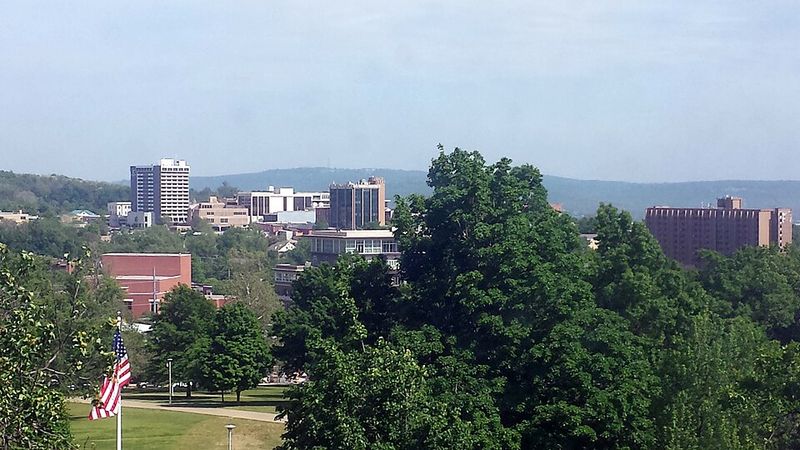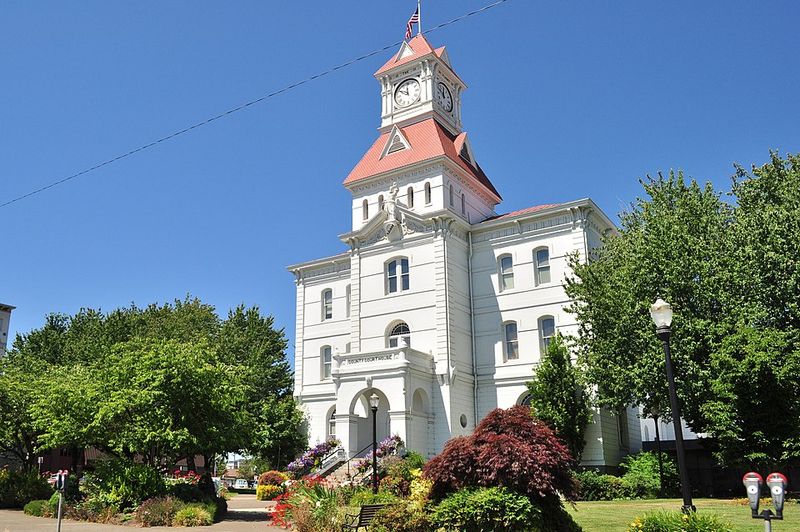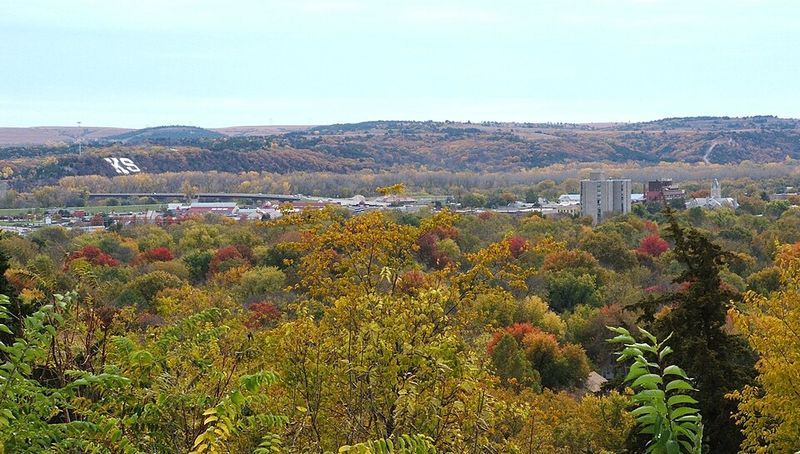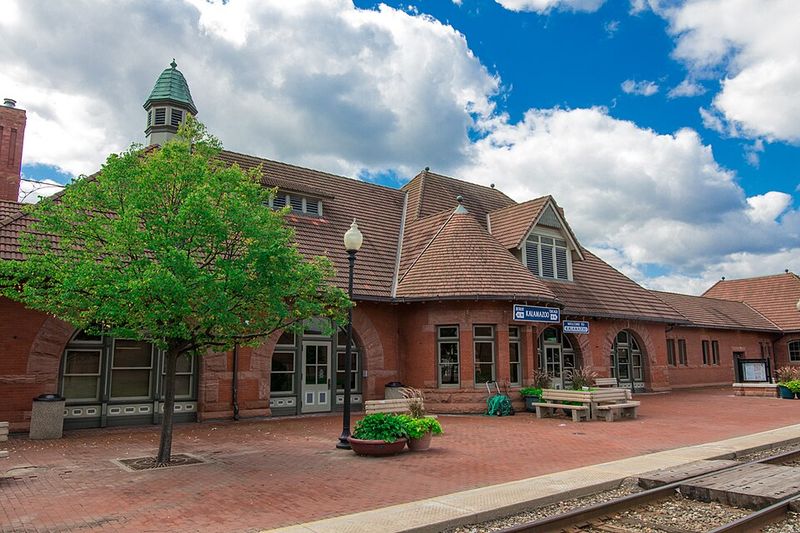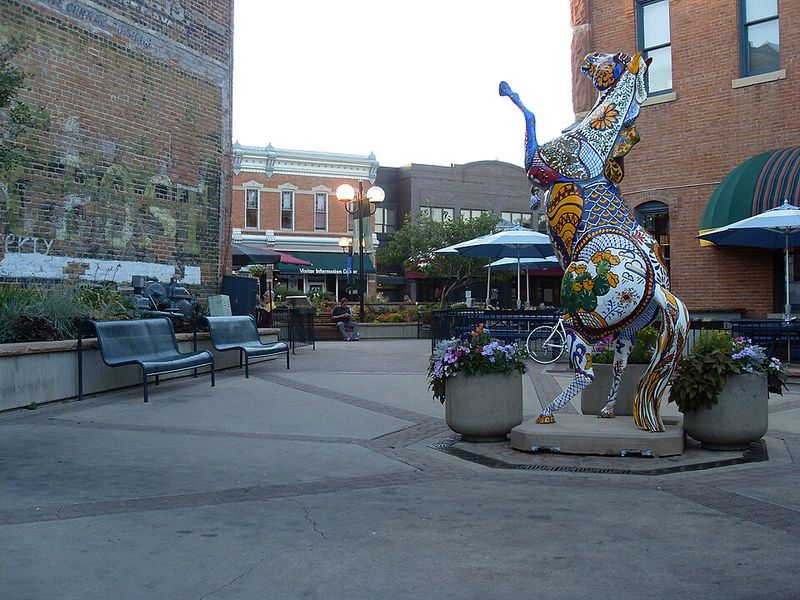College towns aren’t just for students anymore. These vibrant communities offer something special: a mix of youthful energy, cultural events, outdoor activities, and affordable living that appeals to people of all ages. Whether you’re looking for great restaurants, beautiful scenery, or a welcoming neighborhood, these fifteen towns prove you don’t need a college ID to enjoy everything they have to offer.
1. Madison, Wisconsin
Nestled between Lake Mendota and Lake Monona, Madison creates a playground for outdoor lovers year-round. The city boasts over 200 miles of hiking and biking trails that wind through neighborhoods, along waterfronts, and into nature preserves.
Beyond the natural beauty, Madison’s food scene rivals much larger cities. You’ll find farm-to-table restaurants, international cuisines, and a famous Saturday farmers’ market that circles the Capitol building.
The local economy stays strong thanks to the university, state government, and growing tech sector. This combination means steady jobs, cultural events like concerts and theater, and a community that values education and innovation without the stress of big-city living.
2. Boulder, Colorado
With the dramatic Flatirons rising behind the city, Boulder feels like nature’s front porch. Rock climbing, hiking, and mountain biking aren’t just hobbies here—they’re a way of life that draws active people from everywhere.
The food and craft beer culture has exploded in recent years. Pearl Street Mall buzzes with street performers, unique shops, and restaurants that range from casual to upscale, all with that relaxed Colorado vibe.
What makes Boulder special is how the educated, health-conscious community creates an atmosphere of curiosity and wellness. Yes, housing costs run higher than some college towns, but many residents say the lifestyle and stunning surroundings make it worthwhile.
3. Ann Arbor, Michigan
Tree-canopied streets lead you through one of the Midwest’s most walkable downtowns. Ann Arbor earned its reputation as a cultural hub thanks to world-class museums, a famous film festival, and live music venues that launched countless bands.
The University of Michigan brings constant energy through sporting events, lectures, and performances open to the public. Football Saturdays transform the town into a sea of maize and blue, creating an electric atmosphere even non-fans enjoy.
Foodies love the diverse restaurant scene that includes everything from legendary burger joints to innovative farm-to-table dining. The strong job market in healthcare, education, and technology means you’ll find professionals of all ages calling Ann Arbor home.
4. Athens, Georgia
Music history runs deep through Athens’ veins—this is where R.E.M. and the B-52s got their start. Today, live music still pours from venues almost every night, creating a soundtrack for daily life that keeps things feeling young and creative.
The cost of living stays refreshingly affordable compared to other college towns with similar amenities. You can find charming historic homes, walkable neighborhoods, and a downtown that mixes students with long-time residents seamlessly.
Southern hospitality isn’t just a saying here; it’s genuine. The community embraces newcomers, the food scene celebrates both traditional Southern cooking and modern cuisine, and the slower pace feels like a welcome change from big-city hustle.
5. Chapel Hill, North Carolina
Towering oaks create natural tunnels over streets that wind through one of the South’s most educated communities. The University of North Carolina brings academic excellence that spills over into public lectures, art exhibits, and a population that values learning at every age.
Franklin Street serves as the town’s heartbeat, lined with independent bookstores, coffee shops, and restaurants that have served generations. The walkability means you can leave your car at home and still access everything you need.
Basketball isn’t just a sport here—it’s a religion that unites the community. But beyond the court, you’ll find a progressive, welcoming atmosphere that balances small-town charm with big-city thinking.
6. Charlottesville, Virginia
Thomas Jefferson’s architectural legacy shapes this town’s character, from the iconic Rotunda to the brick-lined Downtown Mall. History buffs find endless fascination, while everyone else simply enjoys the beauty of well-preserved 18th and 19th-century buildings.
The pedestrian Downtown Mall stretches for eight blocks of restaurants, shops, and entertainment venues. Free concerts happen regularly, and the atmosphere stays lively without feeling overwhelming or too touristy.
Surrounding mountains and vineyards create weekend adventure opportunities just minutes away. The wine country has grown into a serious destination, and residents enjoy easy access to hiking trails that offer stunning views of the Shenandoah Valley.
7. Ithaca, New York
Gorges carved by ancient glaciers create dramatic waterfalls right in town—over 150 within ten miles. Ithaca Falls plunges 150 feet, yet you can reach it with a short walk from downtown, making nature accessible in ways few cities can match.
Both Cornell University and Ithaca College contribute to a highly educated, arts-focused community. The Ithaca Commons buzzes with local businesses, street musicians, and a farmers’ market that showcases the region’s agricultural bounty.
Cayuga Lake provides the backdrop for summer activities like sailing, kayaking, and lakeside dining. The combination of small-town friendliness, natural beauty, and intellectual stimulation creates a lifestyle that keeps residents happily rooted despite the snowy winters.
8. Bozeman, Montana
Mountains surround Bozeman in every direction, making it a paradise for skiers, hikers, and fly fishers. Yellowstone National Park sits less than two hours away, turning weekend adventures into experiences most people only dream about.
The downtown maintains that authentic Western feel while embracing modern amenities. Craft breweries, farm-to-table restaurants, and outdoor gear shops line historic Main Street, where you’re as likely to see cowboy boots as hiking boots.
Montana State University keeps the population young and educated, but plenty of remote workers and retirees have discovered Bozeman’s charms too. The community values conservation, outdoor access, and maintaining the small-town character even as growth brings new opportunities.
9. Columbia, Missouri
Right where the university campus meets downtown, you’ll find The District—a neighborhood packed with restaurants, bars, and entertainment that serves students and residents equally. This seamless blend creates energy without the typical town-gown divide many college communities experience.
The University of Missouri’s journalism school has earned worldwide recognition, contributing to a media-savvy population and strong local newspaper. Cultural venues host everything from indie films to touring Broadway shows, punching above the town’s weight class.
Growth has come steadily to Columbia, bringing new jobs in healthcare, insurance, and technology. The cost of living remains reasonable, and the central Missouri location puts you within a few hours’ drive of St. Louis, Kansas City, and beautiful Ozark scenery.
10. West Lafayette, Indiana
Purdue University’s engineering reputation attracts innovative minds from around the world, creating a community where problem-solving and entrepreneurship thrive. The university’s research parks and startup incubators have launched companies that grew into major employers.
The Wabash River winds through town, offering trails, parks, and recreational opportunities that provide peaceful escapes. Downtown West Lafayette has revitalized in recent years with new apartments, restaurants, and gathering spaces that appeal to all ages.
What surprises many newcomers is the strong sense of community despite the university’s size. Neighborhoods stay friendly, local businesses know their customers by name, and the Midwest work ethic combines with academic ambition to create a balanced lifestyle.
11. Fayetteville, Arkansas
Tucked into the Ozark Mountains, Fayetteville offers natural beauty that rivals much more expensive destinations. The Razorback Greenway connects the town with 40 miles of paved trails perfect for biking, running, or leisurely walks through forests and along streams.
The University of Arkansas brings SEC football excitement that electrifies fall weekends. But beyond game days, the campus contributes art galleries, performances, and a diverse population that keeps perspectives fresh and interesting.
The cost of living remains surprisingly affordable, especially considering the quality of life and growing job market. Tech companies and major corporations have established operations here, drawn by the educated workforce and lower operating costs compared to coastal cities.
12. Corvallis, Oregon
Oregon State University has made sustainability more than a buzzword—it’s a way of life in Corvallis. Solar panels dot rooftops, composting is standard practice, and bike lanes crisscross the compact downtown, making car-free living genuinely practical.
The Willamette River flows through town, providing kayaking and fishing opportunities right in your backyard. Within an hour, you can reach the Pacific coast or Cascade Mountain trails, giving you weekend options that range from beach bonfires to mountain hikes.
The community stays tight-knit despite steady growth, with a farmers’ market that feels like a weekly reunion. Rain does fall regularly—this is western Oregon, after all—but residents embrace the green landscapes and mild temperatures that result.
13. Manhattan, Kansas
Locals call it the Little Apple, and the nickname captures the town’s ambition to offer big-city amenities with small-town values. Kansas State University anchors the community, but the military presence from nearby Fort Riley adds diversity and stability to the local economy.
Aggieville, one of the oldest shopping districts in Kansas, maintains its historic character while serving up modern restaurants and entertainment. The walkable downtown and affordable housing make Manhattan especially attractive to young families and retirees alike.
The surrounding Flint Hills create a unique prairie landscape that’s increasingly rare in America. Rolling grasslands stretch to the horizon, offering hiking, wildlife watching, and a sense of open space that helps you breathe easier after city living.
14. Kalamazoo, Michigan
The Kalamazoo Promise changed everything when local philanthropists guaranteed free college tuition to public school graduates. This program has revitalized neighborhoods, attracted families, and created a community investment in education that benefits everyone, not just students.
Western Michigan University and several other colleges contribute to a highly educated population and vibrant cultural scene. The downtown mall area has seen significant redevelopment, bringing new restaurants, breweries, and entertainment venues that serve residents of all ages.
Manufacturing heritage meets modern innovation here, with pharmaceutical companies and other industries providing solid employment. The cost of living stays low compared to other Michigan cities, and the location puts you within easy reach of Chicago, Detroit, and beautiful Lake Michigan beaches.
15. Fort Collins, Colorado
Craft beer flows like water in Fort Collins—the town boasts over 20 breweries and earned the nickname Craft Beer Capital of Colorado. New Belgium and Odell brewing started here, and the beer culture has shaped the laid-back, outdoorsy vibe that defines the community.
Colorado State University brings research opportunities and cultural events, but the town’s identity extends far beyond the campus. Old Town’s historic district charms visitors with brick streets, local shops, and restaurants that emphasize Colorado-grown ingredients.
The Cache la Poudre River runs through town, offering kayaking and tubing in summer. Rocky Mountain National Park sits just an hour away, making weekend mountain adventures routine rather than special occasions for Fort Collins residents.
